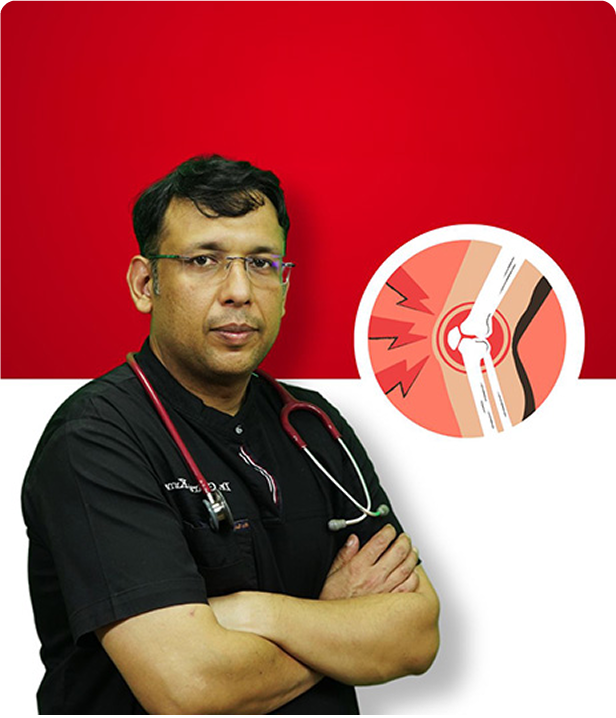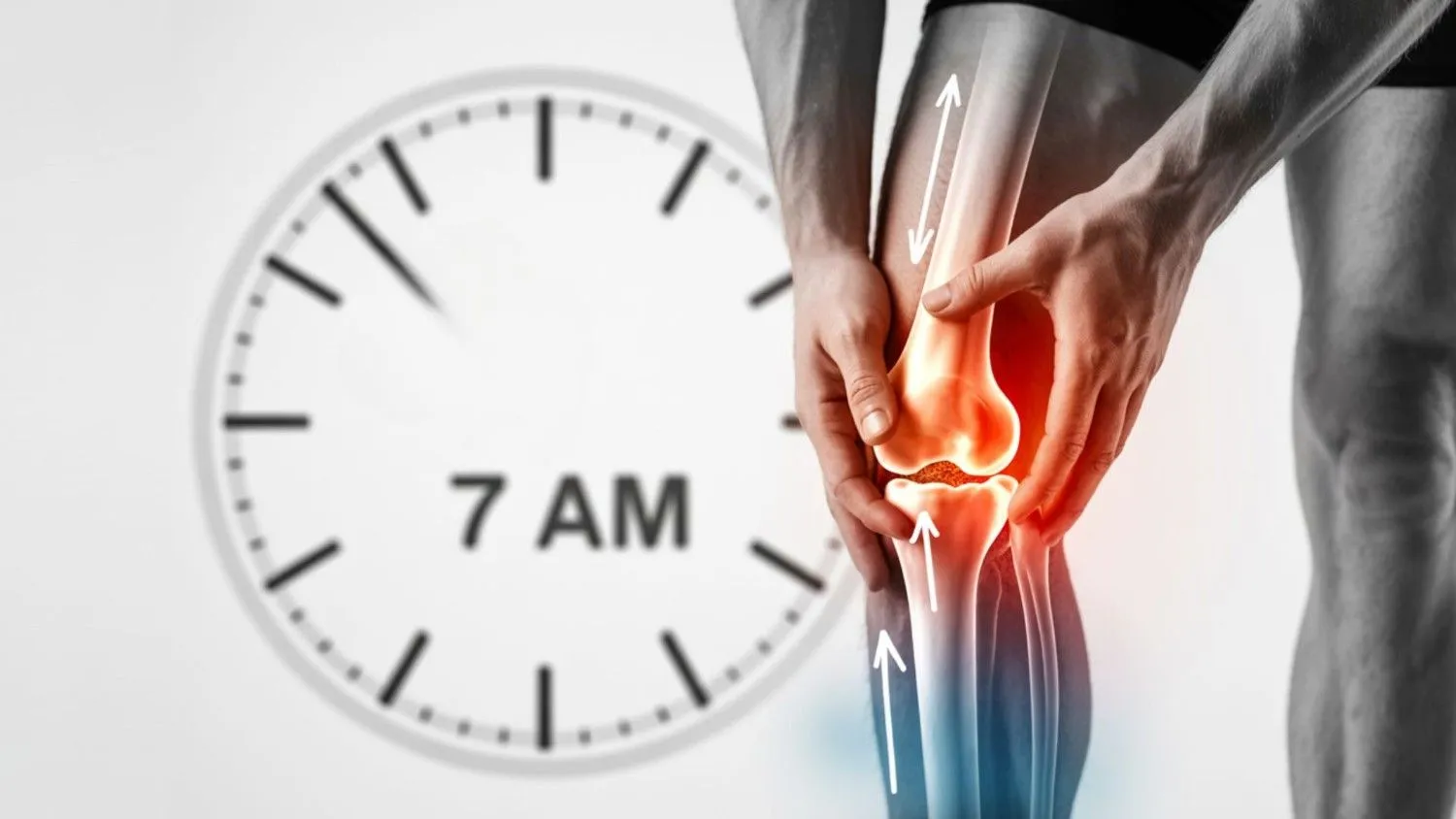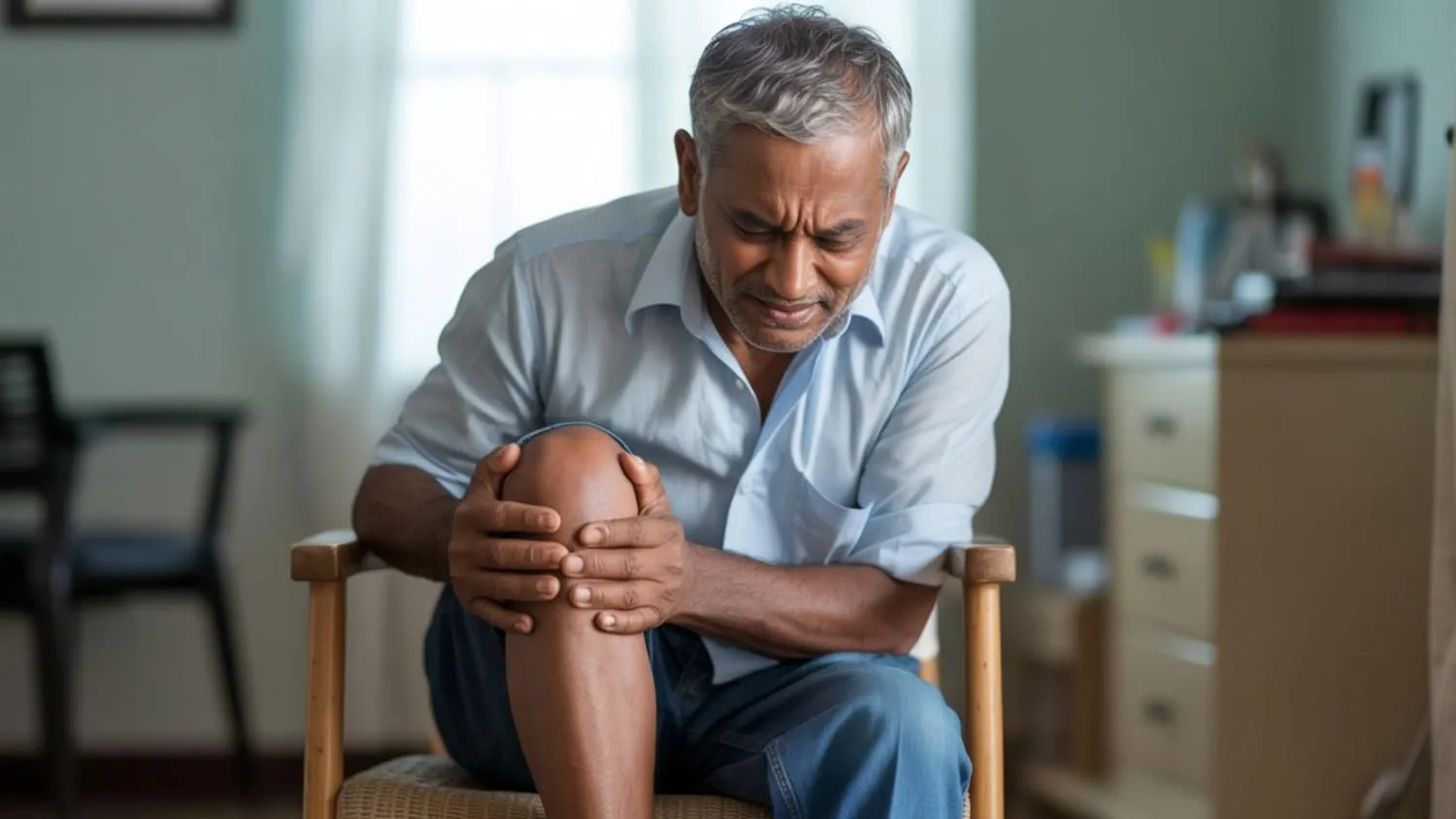Comprehensive care forRheumatoid Arthritis
Diagnosis, Treatment, and Long-Term Relief for Joint Pain and Stiffness.

-%20Illustration%20comparing%20healthy%20joint%20and%20arthritic%20joint%20side%20by%20side.jpg)
Understanding Rheumatoid Arthritis: Causes and Treatment
Arthritis is not a single disease but a group of conditions affecting the joints and surrounding tissues. It can cause pain, stiffness, and reduced mobility, often limiting daily activities.
The most common forms are osteoarthritis and rheumatoid arthritis, each with distinct characteristics. Early diagnosis and tailored treatment are essential for effective management. From medications and physical therapy to lifestyle adjustments and surgical options, several approaches can help patients lead a more comfortable, active, and fulfilling life.

Persistent Joint Pain in Daily Movements
Pain often worsens with activity but usually improves with adequate rest and joint support.

Stiffness After Rest or Morning Hours
Morning stiffness lasting beyond thirty minutes can indicate rheumatoid arthritis

Visible Swelling and Inflammation in Joints
Swelling often brings warmth, tenderness, and discomfort, signaling ongoing inflammation within affected joints.

Reduced Flexibility and Limited Joint Movement
Restricted range of motion reduces flexibility, making daily activities increasingly difficult over time.

Unexplained Fatigue or Low Energy Levels
Systemic arthritis types like rheumatoid arthritis often cause fatigue, weakness, and reduced stamina.

Weight Loss or Fever with Inflammation
Advanced rheumatoid arthritis may cause fever, appetite loss, and unintended weight reduction.

Pain and Stiffness in Hands
Rheumatoid arthritis often targets the small joints, causing pain, stiffness, and deformity.
Real Stories, Real Recoveries...

Personalized Medication Plans for Pain Relief and Inflammation Control
Medications such as NSAIDs, and biologics DMARDs reduce inflammation, relieve pain, and slow disease progression. Each treatment plan is customized based on the arthritis type.

Rehabilitation and Physical Therapy for Improved Joint Strength and Mobility
Therapeutic exercises and guided physical therapy sessions enhance flexibility, strengthen supporting muscles, and reduce stiffness, helping patients regain independence in daily life activities.

Lifestyle Adjustments Including Nutrition and Weight Management Guidance
Healthy weight reduces stress on joints, while anti-inflammatory diets support healing. Lifestyle coaching helps patients adopt long-term habits for improved arthritis management and prevention.

Advanced Surgical Interventions for Severe or Debilitating Arthritis Cases
When conservative measures fail, surgical options like joint replacement restore function. Minimally invasive procedures are recommended to relieve pain and improve quality of life.
Why Dr. Gaurav Gupta?
Over 20 years of specialized arthritis care and joint treatment experience.
Personalized treatment protocols tailored to each patient’s condition and lifestyle.
Integrated approach combining modern medicine with supportive therapies.
State-of-the-art diagnostic facilities for accurate and early detection.
High success rate in improving mobility and reducing joint pain.

Arthritis in Numbers
From prevalence to treatment success rates, here’s what the data shows.
80%
of arthritis patients report improved mobility with early treatment interventions.
1 in 5
adults worldwide experiences some form of arthritis during their lifetime.
90%
of joint replacement surgeries for arthritis significantly improve long-term quality of life.
70%
of rheumatoid arthritis patients achieve remission with advanced biologic therapies.
7 Important things you must know about Arthritis
Most patients suffer from osteoarthritis or rheumatoid arthritis. Osteoarthritis affects cartilage wear of larger joints ( Knee, Hip) , while rheumatoid arthritis is an autoimmune condition attacking the small joints of the hand first and then affecting larger joints such as the knee.
If joint pain persists with stiffness, swelling, or reduced movement, especially in the morning, it may be arthritis and needs professional evaluation.
While common in older adults, arthritis can affect younger people too, especially if there is joint injury, family history, or autoimmune conditions.
Maintaining a healthy weight, eating anti-inflammatory foods, staying active with low-impact exercise, and practicing joint protection techniques can significantly reduce arthritis symptoms.
Seek medical advice if stiffness or pain lasts beyond two weeks, interferes with daily activities, or is accompanied by swelling and fatigue.
Yes. Physical therapy strengthens muscles, improves flexibility, and relieves pain, helping patients maintain joint function and avoid unnecessary surgical interventions later.
Options include joint injections, biologic therapies, or surgical procedures such as joint replacement. The right choice depends on arthritis severity and progression.
Some patients experience symptom relief through acupuncture, massage, or supplements. While not a replacement, they can complement standard medical treatments effectively.
Biologic therapies target specific parts of the immune system, offering more precise treatment, while traditional drugs generally reduce overall inflammation and slow disease progression.




